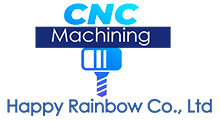The Future of Paintball Barrel Manufacturing: Trends and Technologies to Watch
Paintball barrel manufacturing has come a long way since the early days of the sport, when players had few options beyond basic aluminum barrels. Today, manufacturers have access to a wide range of advanced materials and manufacturing techniques that allow them to create barrels with superior performance characteristics.
As the industry continues to evolve, we can expect to see even more innovation in this area, with new trends and technologies emerging that could transform the way paintball barrels are made. In this article, we will explore some of the most exciting developments in paintball barrel manufacturing, including 3D printing, smart materials, nanotechnology, advanced coatings, and improved testing and quality control.

By understanding these trends, we can gain insight into the future of paintball barrel manufacturing and the potential impact on the sport as a whole.
- 3D Printing:
3D printing technology is advancing rapidly and has the potential to revolutionize paintball barrel manufacturing in several ways. One significant advantage is that 3D printing allows for complex shapes and internal structures that would be difficult or impossible to create with traditional machining techniques. This can help improve barrel performance by reducing weight and optimizing gas flow. Another benefit is that 3D printing can facilitate customization, as it allows for the creation
of unique barrel designs tailored to individual player preferences. In the future, we may see paintball markers with 3D printed barrels become more common, as well as new materials that are specifically optimized for 3D printing.
- Smart Materials:
Smart materials are a class of materials that can change their properties in response to external stimuli. For example, piezoelectric materials generate a voltage when subjected to mechanical stress, while shape memory alloys can change shape in response to temperature changes. In paintball barrel
manufacturing, smart materials could be used to create barrels that can adjust their stiffness or damping properties in real-time, improving accuracy and consistency.
No paintball brands use piezoelectric material in their paintball markers or barrels. The materials have been explored in the past potential use in paintball equipment, particularly in electronic triggers, but no commercial products have been release using this technology. However, as piezoelectric materials continue to advance and become more widely available, it is possible that we may see them used in paintball manufacturing in the future.
- Nanotechnology:
Nanotechnology involves manipulating materials at the nanometer scale. In paintball barrel manufacturing, this could be used to create barrels with superior surface finishes, reduced friction, and enhanced durability. For example, nanomaterial coatings could help improve barrel wear resistance and reduce friction, leading to more consistent shots and longer barrel life. Additionally, the use of nanomaterials in barrel construction could help improve overall barrel performance by optimizing the balance between stiffness and damping.
- Advanced Coatings:
Coatings play a critical role in paintball barrel performance, affecting factors such as friction, wear resistance, and corrosion resistance. Advances in coating technology could allow for the creation of barrels with superior performance characteristics, such as self-cleaning coatings that reduce maintenance requirements. Additionally, new coating materials could be developed that provide enhanced durability and wear resistance, improving barrel lifespan and reducing the need for frequent replacement.
- Improved Testing and Quality Control:
As paintball barrel manufacturing becomes more advanced, it will be increasingly important to ensure that each barrel meets strict quality standards. New testing and quality control methods, such as computer vision systems or machine learning algorithms, could help manufacturers identify and address quality issues more efficiently. For example, computer vision systems could be used to detect barrel defects such as cracks or irregularities in the internal bore, while machine learning algorithms could be trained to predict barrel performance based on various factors such as barrel length, material, and internal structure. These technologies could help improve manufacturing efficiency and product quality, leading to better overall performance and customer satisfaction.
In conclusion, the future of paintball barrel manufacturing looks bright, with several exciting trends and technologies on the horizon. From 3D printing to smart materials, nanotechnology, advanced coatings, and improved testing and quality control, manufacturers have an array of tools at their disposal to create barrels with superior performance characteristics. These new technologies will help improve accuracy, consistency, and durability, ultimately leading to better overall performance and customer satisfaction. As the paintball industry continues to evolve, it will be fascinating to see how these trends and technologies are applied to create the next generation of paintball barrels.
